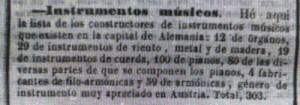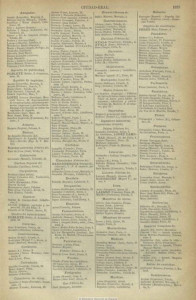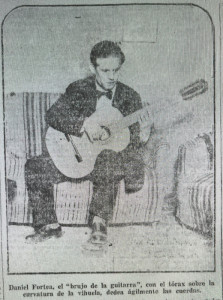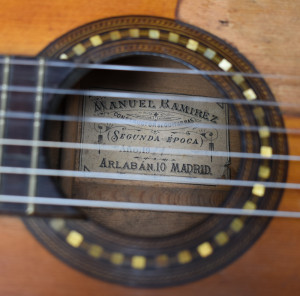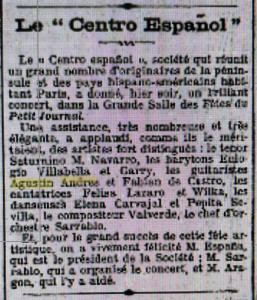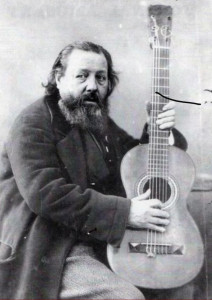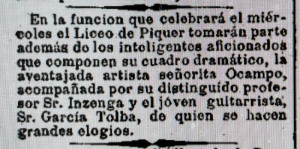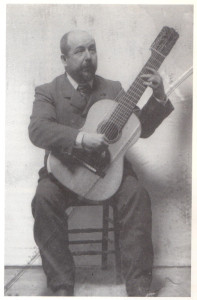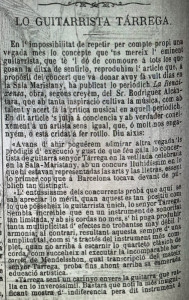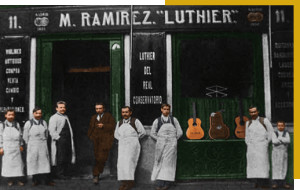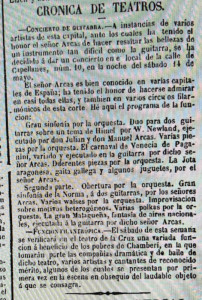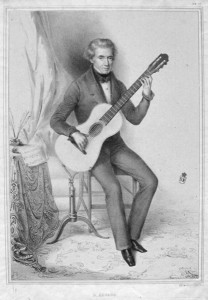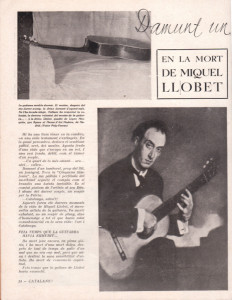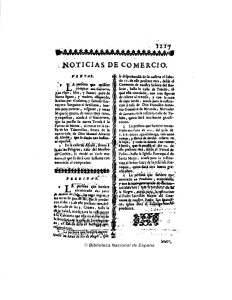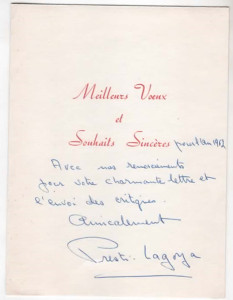We're just 6 months away from the Bicentennial of when Huerta began dazzling his audiences in the New World in the principal cites of New England on May 15, 1824, when James Monroe was the 5th President of the United States. The population of the US was 9,638,453 when Huerta arrived. Boston (where his sheet music was for sale) had 43,298 inhabitants, Philadelphia 63,802, Baltimore 62,738 and New York City where he held his first concert 123,706, and Saratoga, New York 2,233, being the cities where he gave concerts.
This text timeline is drawn from the book by my colleague and friend, Robert Coldwell and Javier Suarez-Pajares "A.T. Huerta Life and Works" published in 2006 by Digital Guitar Archive. I encourage everyone to acquire the book, these skimpy details are drawn from 50 pages of detailed notes, from the 200+ page book.
There are the additional historical notes by myself, about guitar makers and players and the invaluable resource of the Biblioteca Nacional de España en Madrid.
There are at least 111 concerts listed in the book, with 13 documented in the United States and a total of 167 plus concerts noted due to additional research. Dr. Brian Jeffery told me Fernando Sor gave 99 Concerts, that are documented. Andres Segovia gave 5,204 concerts.
Most notably are the concerts where Huerta performed with Fernando Sor and Dionisio Aguado, as they accompanied 6 females singers, and some years later Huerta played duets on stage with Frederic Chopin and Franz Liszt.
He played for the Queens of Spain and Portugal, the King of Belgium, the King of France as well. Segovia, Pujol, etc. performed for Royalty in the 20th century.
Huerta performed on guitars made by Louis Panormo, Gregorio Carracedo, Agustin Altimira, (2 in stock for sale - 6 of Francisco Tarrega's students and colleagues brought their Altimira guitars to his home) Antonio Carracedo.
Throughout this article the dates of when these were acquired are notated. You can bet he visited the guitar workshops in every city he played in, I will mention in some cases who was fabricating where and when.
The performer was on stage at 8 PM and in the taller of the guitarrero (guitar workshop) at 1 PM.
R and G means the French music magazine Revue et Gazette, D de B means the newspaper Diario de Barcelona
6-8-1800 born in Orihuela
1819 attends the colegio de San Pablo in Salamanca
1823 maybe went to Lisbon then Gibraltar then Paris
In the daily "Diario de Madrid" May 20, 1823
"Musica- 6 grandes valses para guitarra sola composed by A. T. Huerta and dedicated to Doña Maria Almazan drawn and printed by D. B. Wirmes, found for 6 reales at the music stores en calle del Turco and the Carrera de san Geronimo, in front of Soledad. Mr. Huerta professor of guitar has the pleasure to accept various aficionados who have demonstrated the desire to take some guitar lessons, all persons who would like to attend these classes, may be directed to the music store on Carrera de san Geronimo where they will be informed of the location of the professor and the rest of the information they need."
11-14–18-1823 concerts 18 with Rossini
"Mr. Huerta, Spanish guitarist, arrived from Madrid
4-26-1824 arrives in New York
5-15-1824 concert in City Hotel NY
5-18 announces that he will teach in NY
5-24-24 marries pianist Sabina Meucci
6-5-24 Washington hall with Mrs. Huerta on the piano
7-8-24 accused of beating wife
6-15-24 accused of adultery in Philadelphia where is was giving concerts (Baltimore Patriot 7-1-24)
6-16-24 1st concert Philadelphia Masonic hall. Concerto with orchestra
6-22-24 2nd in Philadelphia solos duets (pianos) Sor Sonata
7-1-24 concert Baltimore w/ piano
8-3-24 concert Saratoga NY piano
Grand Potpourri Fandango Bolero
8-13-24 accused of adultery in NY
9-9-24 Washington hall
9-13-24 again Washington hall announced
in the NY Evening Post
11-20-24 arrived in Baltimore
12-2-24 concert (Sor is his European rival) but none on this side of the Atlantic at Mr Bulet’s Assembly Room
12-13-24 concert at Mallet’s Ballroom
12-17-24 announced 12-15-24
3-2-25 publication of the Gran marcha in Philadelphia
7-16-15 accused of abandonment
8-25 Giuseppe Pasta writes to his own wife
“Manuel Garcia received a letter from Huerta-he said he had made a fortune in a few years”
9-19-25 Boston Music store received Hymn of Riego (supposedly written by Huerta but unsubstantiated)
10-12-25 concert access from Washington Hall
11-8-25 deposition of divorce
12-17-25 publication of divorce
1/2/26 Farewell concert tickets $2.00 each = $65.00 (In 2023) 3-4 times Roland Dyens and GFA winners concert ticket prices ay local guitar societies.
10-3-26 Meucci family naturalization papers produced
1826 trip to Havana?
1827 London arrived March 1827 3 waltzes published
5-18-27 takes part concert Almack Rooms
6-22-27 Argyll Rooms Theo Labarre Charles De Beriot
6-29-27 Sonata at Duke of St Alban’s mansion
5-13-28 concert Town Hall Cambridge
6-6-28 concert Argyll Rooms Pío Cianchettini
9-27-28 married Angiolina Panormo guitar maker Louis Panormo's daughter
1829 Louis gives him a guitar as a wedding present
April 9, 1829 concert
April to March 1830 Paris?
3-20-30 concert Clifton hotel
5-22-30 benefit concert didn’t go well
Orchestra promised but didn’t show
5-26-30 He writes to The Times threatens to leave England
9-11-30 poem on hearing Huerta in The Atheneum
10-20-30 concert Petzold salons
1-16-31 concert participation for Spanish family of refugees
Same day the Austrian guitarist Schmidt and Regondi play in Paris
3-31 Grand Waltz reviewed disingenuously
Guitar put down
3-10-31 letter to George Cumberland
No students no concerts no money - his greatest enemies were: Sor and Carulli
5-16-31 concert Sala Chanteraine sponsored by Rossini received 100 francs from King Louis Phillipe I
10-27-31 concert Athenee Musical Paris Rene Lacote (Used by Sor) and Etienne Laprevotte (used by Aguado) making guitars
12-17-31 concert Hotel Fesch Paris
1-7-32 concert Dietz salons Paris review in Revue Musicale “you have to hear him’
2-15-32 Sor praised but “why such dedication to such an instrument?”
3-17-32 concert Petzol salons announced and reviewed in Revue Musicale
6-15-32 concert Dietz salons very highly praised in Revue Musicale
12-14-32 concert Sala Taitbout Paco de Lucena would play here in 1880 for 6 weeks
2 announcements for 12-14 concert
12-16-32 he and Sor and Aguado play in Historical Concert by Fetis “Spanish villancico by Soto de la Puebla for 6 female voices 8 guitars
3-19-33 concert Dietz salons with Franz Liszt cello Franchomme
4-2-33 Berlioz benefit for Harriet Smithson
Huerta Chopin Liszt did duets Berlioz did not mention Huerta in his memoirs! and was very upset that Paganini didn’t want to participate.
In this year Huerta began to be called the Paganini of the Guitar in the press repeatedly. We see that Fernando Sor also was called this, but posthumously, and Julian Arcas in 1855 at the age of 23.
4-23-33 Huerta organized a concert at Dietz salons good review
5-2-33 another Berlioz concert
6-21-1833 in San Sebastián for infante Francisco de Paula
9-8-33 2 concerts in Burgundy in salons Finck
In the daily "El Correo" (Madrid) on 9-23-1833 # 814 on page 2
Review of a Bilbao September 17, 1833 concert.
1834 Angelina born to Angiolina
1-26-34 Fetis mentions Huerta in Revue Musicale large article dedicated to Zani de Ferranti
3-16-34 Letter from Victor Hugo to Huerta
Spain
4-15-34 concert Barcelona Teatro de la Cruz or Principal Pedro Antonio Chemena making guitars with a tornavoz at this time he was the inventor.
6-21-34 article/ autobiography boletín de la revista española no. 247
1834-1835 concerts in Valencia and Madrid Silvestre Sentichordi (1 in stock for sale) making guitars in Valencia. Juan Muñoa, Manuel Narciso Gonzalez (made a guitar for the Queen of Spain at this time), Gregorio Carracedo making guitars in Madrid
In the daily "El Observador" (Madrid. 1834) on 4-13-1835 on page 4 to be held on Sunday the 19th at the salon Santa Catalina in Madrid.
In the daily "La Abeja" (Madrid) on April 26, 1835 review of a concert at an unnamed location in Madrid on Tuesday April 21, 1835.
In the daily "La Abeja" (Madrid) on June 2, 1835 there are reports of concerts held in Sevilla.
On June 27, 1835 there were terrible floods in Granada, Trinidad Huerta asked the local governing officials to be able to do a benefit concert for those ravaged by the calamity. This was reported in the daily "La Abeja" (Madrid) on July 7, 1835.
In the daily "La Abeja" (Madrid) on 7-17-1835 on page 4
"— Trinitario Huerta, honorary member of the
Royal Conservatory of Music in
Paris and several philharmonic societies of
Europe, decorated with crosses of distinction,
has offered to give a guitar concert in the city of Granada, as long as
the quota of 150 people is filled per subscription at 20 reales each."
In the daily "La Abeja" (Madrid) on August 14, 1835 is mentioned that in Malaga there was a concert on August 7.
9-17/27-35 publication of controversy of performance in Malaga Antonio de Lorca Garcia making guitars
9-19-35 20 reales per ticket Farewell concert w/ Orchestra and dancing
1836 concerts in Sevilla Manuel Guitierrez making guitars
In the daily "El Eco del comercio" on 6-26-1836 # 788 on page 2 is mentioned that on June 17, 1836 a concert took place in Cadiz at the main patio at the convent of San Agustin.
1837 concerts in Cadiz Josef and Pages family making guitars, also Benedid family - in 1997 I sold an 1835 Mateo Benedid to the late great Frank Wallace, it had the thickest bass notes of all guitars I had played up until that time in the early part of my career.
England and Ireland
6-26-38 Willis’s Room London “Paganini of the guitar’ (The Musical World)
7-2-38 Queens Concert Rooms London
9-16-38 Manchester best ever heard hall not filled but should have been to the reviewer
1839
1-22-39 Rotunda of Dublin
3-9-39 Theatre Royal of Dublin plays 2 pieces among Harp and Violin
52 concerts played 1824-1840
Paris
1840
1-25-40 Paris
2-16-40 critical reference by Berlioz
3-23-40 Richter salons plays a piece dedicated to Berlioz
May 1840 problems some concerts in Paris
6-11- 40 concert in Salons de la rue Monsigny 5, Paris
Mrs. Huerta did a concert with Jose Ciebra on 6-10-40 Jose Ciebra was using the rest stroke in Northern Europe, one of the first to do so, I wrote about this on the internet in 1997.
6-22/27-40 farewell concert
7-3-407-8-40 last concert
7-10-40 tickets 3 francs no discount
2-4-41 review of 4 works published
11-28-23
1842 concerts in Germany
3-3-42 Queen’s concert rooms of Hanover square London
4-2-42 Mrs. Huerta plays Piano in the same location
10-2-42 Henri Blanchard writes in Revue and Gazette comments by Berlioz and Huerta
1843 Berlioz’s Grande trait de instrument … op 10 Zani de Ferranti Huerta Sor des célebre guitarists
1-13-43 Miguel Agustin Principe “La guitarra” (El Andion Matritense) los famosos son Sor Aguado Carnicer Ciebra Huerta
11-1843 poorly attended concert in Brussels
The daily "El Eco del comercio" on May 9, 1844 n.º 515 on page 4
"Our famous guitarist Huerta,
is in Brussels, where he has surprised us with his
skill.. This privileged genius, this
Spaniard notably has shown that his profound
knowledge encompasses and masters with equal mastery
the light and lively airs that the melancholic
and majestic that start from serious and pathetic."
Paris
3-16-45 R and G “is in Paris and does unbelievable effects on the guitar “
5-17-45 concert Sala Pleyal de
Paris
Announced 4-6-45 and 4-16-45
Review 4-20-45
Concert Salons Hesselbein
Announced 5-23-45 took place 4-27-45
4 long pieces Huerta
R and G 6-1-45 Turco in Italia, Barber de Séville, Grande Waltz Huerta Soivenir de Bellini
7-2-45 salons Hesselbein R and G 7-6-45 Sequidilles and Boleros y 4 otras last farewell
11-18-45 sketch of Huerta in Le Charivari by Cham “Huerta 1st guitarist of France et Navarre “
1-8-46 in Allgemeine Wiener Musik-Zeitung “the Spanish guitarist Huerta is now the number one living guitarist” his effects in the Semiramis overture and Black Dominos is the greatest virtuosity on the concert instrument
1-11-46 salons Hesselbein R and G 2–22-46 Illustrious Huerta, the celebrated guitarist dignified with improvised variations his thankless instrument
1-3-46 concert salons Hesselbein R and G 3-22-46 Blanchard said “played a funeral March where you could feel the grief of the burial”
The daily "El Heraldo" (Madrid. 1842) on March 1, 1846 page 3
"What the foreign newspapers say is true
we will soon have in this capital
the famous guitarist Huerta. Before returning to
Spain he seems to be planning to give some concerts
in Paris, where it is currently located."
4-12-46 R and G 4-12-46 Farewell to Royal Academy in Paris en route to La Harve
The daily El Heraldo (Madrid. 1842) on April 23, 1846 on page 2 Also the daily "El Espectador" (Madrid. 1841) April 23, 1846 on page 4 reported it as well.
"—The famous guitarist Huerta has given a
chosen concert in Marseille, in the brilliant hall
of the philharmonic society, and the numerous and elegant gathering.
The audience that heard the delicious notes of his instrument applauded our compatriot, frantically,
and left very satisfied. "El Correo
de Marsella", when describing this musical soireé,
'Hueita has reached perfection in the difficult one
of playing the guitar, and which has no rival in the
pressure, lightness and grace of his airs.'
We know how much appreciated the artist thinks
he'll Spain in a few days."
The daily "El Heraldo" (Madrid. 1842) on June 7, 1846 on page 3
"Yesterday the magnificent steamer anchored in this port
the ship "Malaga" from Havre, bringing the,
the famous guitarist Huerta, who had the
pleasure to play some variations of a
brilliant effect at the request of several people, who
were amazed at his execution. This ship left in the afternoon for Santander and La Coruña."
The daily "El Clamor público" Madrid on June 23, 1846 on page 4
"Tonight the famous guitarist gives his second performance at the Liceo theater (in Burgos),
the guitarist Huerta. In the first one he was very applauded, because it seems
impossible to show more skill."
In the daily "El Heraldo" (Madrid. 1842) on July 28, 1846 on page 4
"The famous guitarist Huerta has given a concert at this theater
(in Vitoria) and another at the Liceo, admiring with
justice the numerous attendance that he has obtained
surprising skill on such a difficult instrument."
The Basque Country
In the daily "El Heraldo" (Madrid. 1842) on August 14, 1846 on page 4 and "El Clamor público" on August 15, 1846 on page 4
"The famous guitarist Huerta is
currently in the Basque provinces receiving numerous applause from all who have the opportunity
to admire the surprising ability of that
artist. Lately he has given a concert in the
Arechavaleta baths, which he extremely liked."
In the daily "El Tiempo" (Madrid. 1844) 8-16-1846 page 4
"—They say he will come very soon to this area the famous guitarist Huerta, who is currently found in the Basque Provinces, where he has given many performances, making him admired by all who have had the opportunity to hear him."
8-46
El Barcino Musical 8-23-46 he is waiting in Madrid the celebrated Huerta having done some concerts in the Basque Country
In the daily "El Heraldo" (Madrid. 1842) 8-26-1846 page 4
"Also look out for the guitarist Huerta, who
He will give two concerts at the theater."
In the daily "El Clamor público" September 12, 1846 page 4
"We also have the famous guitarist Huerta, who before
last night he gave a concert in the Villa's home, which was attended by a large crowd; but either because he thought that most of it was not understood by his merit, or because he was not in the mood, he did not satisfy the concept that the public had formed of him."
In the daily "El Clamor público" on September 20,1846 on page 4
"—THE GUITARIST HUERTA.—They write to us from Bilbao on the 14th. Yesterday the guitarist gave a concert in this theater. The most select of the population attended and they were very pleased with the attendance of this professor's merit, as they could not help but expect from his vast knowledge of what he has so much evidence of in various capitals of the kingdom and abroad."
1847 3rd edition of Fetis, he says Carulli was the first to play difficult variations and Carcassi Huerta and Aguado had raised this art to the highest level and new talent of Cano Arcas would work this miracle.
In the daily "El Español" (Madrid. 1835) on 5-20-1847 #891 on page 4
"—The famous guitarist Huerta left the day before yesterday
from this capital to the royal site of Aranjuez, where
he believes that he will play in the presence of His Majesty, and even that he will give
some concert. He will then return to Madrid, where he will
will make himself heard in one of the theaters."
In 1847 Gregorio Carracedo made two Guitars Huerta used in concerts in Madrid both were Rosewood back and sides concert models.
In the daily "El Heraldo" (Madrid. 1842) on 6-11-1847 on page 4
"—The famous guitarist Huerta who, like
as our readers know, a few days ago it was
in this area, he will have the honor of being admitted the
night after tomorrow on Sunday into the royal chamber
giving in the presence of Her Majesty the Queen to execute
some pieces with the surprising skill that so many
his fame has brought him. Huerta, despite being Spanish,
he had not yet had the opportunity to be
heard in the Queen's palace, despite having
having already been heard and given performances in all the courts of Europe."
In the daily "El Heraldo" (Madrid. 1842) on 6-12-1847 on page 4
"—As soon as the guitarist Huerta
let Her Majesty the Queen hear that, as our
readers know, it will be next Sunday night, he will have
the concerts that he plans to give for the public,
and that many fans want to verify themselves at the
soonest, because when the heat begins, the emigration of many polite people will also begin, who would not help but regret leaving.
without having had the pleasure of hearing this notable
artistic work, which has received so much applause, and which
fame has been acquired with its admirable execution
on the guitar."
In the daily "El Clamor público" on 6-15-1847 on page 4
"—THE GUITARIST HUERTA.—Last night he played in the palace
and in the presence of the Queen and her august uncle and
cousin - the famous Spanish guitarist Huerta. With the
mastery as ever, he executed a fantasy on themes
of the Semirámide and other Spain, deserving
the highest praise from H.M. and AA. Having completed
the pieces, the Queen sent Mr. Huerta
that will play in an immediate room, so that
to hear her stewards, whose order he carried out in the
moment of his, also giving of his own will
the ears of male servitude."
In the daily "El Heraldo" (Madrid. 1842) on 6-20-1847 on page 4
"—It seems that the guitarist Huerta has not yet arranged any of the concerts that he plans to give, due to lack of suitable venue to hold them; But lately he has addressed the board of the Liceo requesting the society's hall, and depending on the result of this request he will decide what he must do to carry out his plan, which many fans want to see carried out so much."
In the daily "El Clamor público" on 6-7-1847 on page 4
"—AWARD OF MERIT.—It is said that the Queen is going to
award the famous guitarist Huerta the Cross of Carlos
III. We believe this resolution is very fair and correct,
much more than when they are lavished with so much excess
thanks and distinctions to people who do not deserve them.
Mr. Huerta in his genre is a specialty
and to this recommendable circumstance that is enough
alone so that His Majesty gives him the reward that he is
worthy, combines the ability to be a great musician and possess talents
of an eminent artist."
In the daily "El Heraldo" (Madrid. 1842) on 7-11-1847 on page 4 and in "El Recopilador general" on 7-13-1847 on page 4 and "El Español" (Madrid. 1835) 7-15-1847 #938 on page 4
"—Finally it seems that, having overcome the difficulties
that were in the way, the hall of the
Liceo to the famous guitarist Huerta, and that very soon
will give there the first of his public concerts."
In the daily "El Genio de la libertad" 7-15-1847 on page 2
Award of Merit =It is said that the Queen is going
to award the famous guitarist Huerta the cross of Carlos III. We believe this resolution is very fair and correct, much more so when so many thanks and distinctions are lavished on people who do not deserve them. Mr. Huerta in his kind is a specialty and this commendable circumstance that is enough on its own for His Majesty to give him the award of which he is worthy, combines that of being a great musician and possessing talents as an eminent artist." ("El Clamor público")
In the daily "El Heraldo" (Madrid. 1842) on 7-15-1847 on page 4
"—The famous guitarist Huerta has been
awarded by His Majesty with the cross of Carlos III."
In the daily "El Español" (Madrid. 1835) on 7-16-1847 #939 on page 4
"—The famous guitarist Huerta has been
awarded by Her Majesty with the cross of Carlos III. Knowing
of this grace Mr. Rubí gave it to him before
yesterday in proof of how much he appreciates its
merit."
In the daily "El Clamor público" on 7-23-1847 on page 4
"—CONCERT.—On one of the nights next week, the eagerly awaited concert that the admirable guitarist Huerta will give us will be held at the Liceo. Some distinguished amateurs and professors will take part in it, and everything will contribute to highlighting the amazing ability of the Spanish artist. Everything indicates that both on the artistic side and on the attendance, the concert will be brilliant."
in a daily "El Español" (Madrid. 1835) on 7-23-1847 #945 on page 4
"- In a long-awaited concert that the amazing guitarist Huerta will give us will be held at the Liceo soon. Some distinguished amateurs and professors will take part in it, and everything will contribute to highlighting the astonishing skill of the Spanish artist."
In the daily "El Español" (Madrid. 1835) on 7-24-1847 #946 onpage 4
"~-On one of the nights next
week the concert he will give in
the Liceo the guitarist Huerta, in which we talked about
in one of our latest issues."
In a daily "Diario constitucional de Palma" (1839) on 7-27-1847 on page 3
"— The famous guitarist Huerta has been awarded by His Majesty with the cross of Carlos III."
In the daily "Diario de avisos de Madrid" August 6, 7 and 8, 1847 see the photo of the advertisement, for the concert at the Museo del Madrid on August 8, 1847.
In the daily "El Clamor público" on 8-10-1847 on page 4
"—CONCERT BY SENOR HUERTA.—The night before last
the concert given was big in the Museum theater
by the famous guitarist Huerta. Against what usually
happens in such functions, the attendance
It was numerous, and the first artists were noted in it
from the capital.
The European fame that Mr. Huerta enjoys, tells us that he
avoids talking about his skill on the instrument, essentially
Spanish. What are we talking about saying, that already
our readers may not know, of the eminent artist who
have France, England and Italy admired?
That he plays with surprising beauty and security;
that he executes with just one hand what many
teachers would like to execute with both; that
the guitar played by him is not only a guitar,
but another instrument, whose sounds resemble
those of the harp or the forte piano; and finally, that even
he takes advantage of the wood, playing a tambor effect
on it. Where the Lord truly admires
Huerta is into the pianos, as he demonstrated before
yesterday in the Semirainis symphony and in other
difficult pieces that he executed.
We would be unfair if we did not make particular mention
of the artists who entertained the concert. The
Messrs. Oudríd and Gastambide, on the piano; the Lord
Sarmiento on the flute, and Mr. Romero on the oboe,
They corresponded worthily to the reputation they have
in the artistic world.
The audience, naturally, applauded resoundingly.
to Mr. Huerta and his companions, following the
hour of conception, evident proof of pleasure with
that he heard; it surprises us so much, how little I like those
instrumental concerts generally."
In the daily "El Clamor público" on 8-18-1847 on page 4
"—PRINCIPE.-In one of the first performances given at the Teatro del Principe, the guitarist Huerta will appear to perform some pieces."
In the daily "El Clamor público" on 7-9-1847 on page 4 and "El Eco del comercio" on September 8, 1847 n.º 1.515 on page 4 and "El Heraldo" (Madrid. 1842) on September 8, 1847 page 4 and "El Popular" (Madrid. 1846) on September 8, 1847 and "El Espectador" (Madrid. 1841) September 9, 1847
"—CONCERT.—The Liceo society has granted
to the famous guitarist Huerta, the permission to give a
concert in its halls. With this reason let's go out
to the philharmonic meeting that will be held very soon,
which they will take part in addition to the other very
distinguished artists, the Albini ladies.
This concert is the last one he intends to give
Mr. Huerta before emerges from Madrid."
We see in this last item that it was covered by 5 newspapers!
In the daily "El Heraldo" (Madrid. 1842) on 9-11-1847 on page 4 and "El Español" (Madrid. 1835) on 9-12-1847 #989 on page 4
"—The famous guitarist Huerta begs us
that we announce to his friends, to the fans and to the
guitar teachers that Gregorio Carracedo, fabricator
of guitars on calle de la Cruz, has built
two rosewood of an extraordinary quality,
being able to assure that he has not seen them louder, and
that his excellent voices meet all the conditions
that requires such a difficult instrument. Various fans,
they have also seen them and have assured the same thing, that
giving very pleased to see such good works due
to the application and talent of a Spanish artist.
and so that the general public can play, Mr.
Huerta at the farewell concert that will have the honor
to give in the Liceo before leaving for abroad,
he will play on said guitars, that he truly
They deserve the name of harps."
In the daily "El Español" (Madrid. 1835) on 10-15-1847 # 1,016 on page 4 and "El Clamor público" on 11-11-1847 on page 4 and "Diario oficial de avisos de Madrid" on 12-11-1847 on page 8 and El Español (Madrid. 1835) on 12-11-1847# 1,040 on page 4
"—The famous guitarist Huerta is ready
to give his farewell concert."
in the daily "El Observador" (Madrid. 1848) on 1-27-1848 #3 on page 2
"Several newspapers of this court have announced the death of generals Isidro and Capaz, and the famous guitarist Huerta; However, we can assure our readers that all of these
These people are still alive, and that their illnesses have never been so serious."
1-27-48 false report of his death several newspapers in Madrid reported this.
1-13-48 on 1-14-48 el eco del comercio reported “ it is not necessary to speak of his mastery”
1-18-48 concert in Madrid?
In the daily "El Heraldo" (Madrid. 1842) on 12-9-1848 on page 4 and "El Popular" (Madrid. 1846) on 12-9-1848 on page 4
"—In Valencia has arrived on the way to Rome
the famous guitarist Huerta. It is believed that he will give some concerts in the first of these capitals."
In the daily "El Clamor público" on 12-16-1848 on page 4
"—GUITARIST HUERTA.—Our correspondent
from Valencia writes to us on the 12th what we copied to
the foot of these lines:
'The famous guitarist Don Francisco Huerta will give
tonight his second concert in the theater of this
capital. In the first one he achieved brilliant success.
and unanimous applause. Said professor goes to Rome.
Good time to go with music to the Italians!' "
1849 1st son Enrique born to Salvadora Viguria of Pamplona 3rd marriage
1-21-49 concert in Liceo de Tortosa 1-26-49 Diario de Barcelona 1-27-49 also
1-2-49 Arrives in Barcelona
In the daily "El Clamor público" on February 4- 1849 on page 4
"—THE GUITARIST HUERTA.
They tell us about Tortosa with the date
29 of the past month:
These last few days we have had in this city
to the famous guitarist Huerta, who received so much applause
he has received in Spain and in foreign courts:
he worked at the Liceo and in the theater, being
both received with the greatest ovation by the
large gathering that he had rushed to
listen to me In the first, in particular, the second
night that I am freely driven alone.
Due to his enthusiasm as an artist, he showed up to play at
the intermissions of the dramatic section that the
society gave, he was admirable in every way,
awakening in the hearts of all
spectators an unparalleled interest in that privileged
legendary talent. The Liceo society, to express
in some way the appreciation deserved by the
Mr. Huerta, has named you his merit partner
and he has reciprocated it, as well as the public
dertosense, inserting two communicative expressives
in one of its newspapers.
The last Sunday at five in the afternoon had
the opening of the new premises of the Círculo take place, located
in the Plaza de la Constitución: all rooms
They were decorated with the greatest luxury and in the manner I
that must remain, except the curtains of the
doors that had not yet been received from Barcelona.
The one we liked the most was the one intended for the
game, not only because of the mat and tables built
with all the requirements, but for the beautiful
combination of three colorful continuous solar lamps
along suspended from the ceiling. The one of
dance was only lit by a large lamp
of scraped glass. The Liceo orchestra was
playing selected pieces while the members
they were showing the premises to the ladies who were involved in such an act.
They deigned to attend. Then to give to the
young people danced a waltz and a rigodón. Laudable,
very laudable is the asset placed by the board of directors
of the Circle, in front of which stands the Most Excellent
Marquis de la Roca, has deployed in this
opportunity to deserve the pleasure of society.
This is not only the first step that the
enlightened people from Tortosa towards the career of
civilization, even in the midst of civil discord
the Lyrical Dramatic Liceo that dates back to
1842 is a respectable corporation, which despite
of the fight that has been experienced by people
envious, always honor this most faithful and exemplary
city.
To accompany Mr. Huerta, of whom we have
already spoken, a subject who has acted as a writer,
and it seems that he takes him with him as a secretary.
The editors of El Dertosense had
the weakness of inserting a poetry that enters
other nonsense and measurement errors tells us
that soda has petals, and that in his country it
breeds quite a bit. There are some rooms there."
2-15-49 D de B
2-19-49 concert in private salon D de B 2-21-48 Antonio Fargas y Soler talks about the joy to listen to Huerta
2-20-49 D de B announced 2 concerts in Teatro del Liceo de B
2-24-49 he follows a two act comedy with Semiramide the 2 dancers then Huerta grande concert in Bb minor
Jota Aragonesa with dancers the Huerta plays Cachucha and Jaleo de Cadiz 4 reales
2-25-49 turco in Italia Rossini tema de Sor his and Huerta’s variations, estudio by Aguado and Huerta’s variations then comedy then improv over Galician bagpipes and la Muñiera
2-27-49 D de B Fargas y Soler critic on 2 concerts
In the daily "El Clamor público" on 3-6-1849 on page 4
"—THE GUITARIST HUERTA.—We read in "El Fomento" of Barcelona of the same date:
The famous guitarist gave his first concert the day before yesterday at the great Liceo theater in this city. The fame that had preceded him attracted a large gathering at the said coliseum. The various pieces that he performed earned him a flood of applause, because Mr. Huerta has managed to achieve on his instrument what can hardly be improved anymore. We advise amateurs not to lose out on the opportunity to admire him this artistic day."
In the daily "El Heraldo (Madrid. 1842)" on 3-7-1849 on page 4
"The famous guitarist Huerta gave the 27th (of February)
he gave his first concert at the great theater of the
Liceo dt Barcelona, being highly applauded by the gathering
who came to hear him."
In the daily "El Barcelonés" (Barcelona. 1845) on 3-17-1849 on page 1 and El Barcelonés (Barcelona. 1845) on 3-19-1849 on page 1
"The famous guitarist Huerta
whose artistic talent was appreciated. so much
named above all the European capitals,
deserving honorable decorations by
several sovereigns, and lately from our
young Queen he is going to give a concert
Thursday of the next week in the spacious
Salon de San Agustin, located in
calle de Hospital. We know that the applauded
artist is going to execute pieces from all
the genres, and that he will alternate some of
songs of several gentlemen who, with their gifts
they have lent themselves to liven up this
academia musical here to wait is that Mr.
Huerta receives a brilliant reception, and
that the concert, the details of which are
they announced this very gathering for all
who want to listen to this notability
that deserved so much applause from his
presentation in the great theater of the Liceo.
The tickets at the price of 10 reales have been
They will be selling at the instrument store
of Francisco España calle de Escudellers." Francisco España made guitars and violins (I have 2 of his 1860's violins for sale.)
3-17-49 Gazette Musicale de Paris 4-1-49 review of 2 concerts in Barcelona in teatro de Liceo
3-24-49 concert Salons de San Agustin de Barcelona D de B announced 3-18-49 critic 3-28-49
Buenaventura Bassols played 2nd guitar in "Lucia" at the end of the show
Agustin Altimira made a guitar for Huerta in 1850, maybe for Buenaventura Bassols too, it's unknown.
4-4-49 does a guest set in the intermission of a Sociedad Filarmónica de Barcelona 3 pieces marcha Fúnebre capricho and otra sobre aires nacionales (Flamenco pieces)
In the daily "El Bien público" (Barcelona) on 4-10-1849 on page 4 has an article "ACADEMIA DE GUITARRA.", about a school that Huerta is installing to have at least 20 students. Classes held twice a week, gentlemen in the morning, ladies in the afternoon paying 4 reales.
5-4-49 farewell to salons de San Agustin Barcelona D de B 4-23-49 announced 5-2-49 2nd announcement
9-27-49 concert Gerona Liceo de Gerundense D de B 9-30-49 (Domingo Prat was born in this city decades later in 1886)
10-6-49 teatro de Gerona D de B 10-12-49
In the daily "El País" (Madrid. 1849) on 10-23-1849 on page 4 and "La Nación" (Madrid. 1849) on 10-25-1849 on page 4
"—The execution of a
elegant birdhouse made in this area for S. M. the
Queen, by Mr. Gregorio Carrecedo, already advantageously known for a guitar that he made for Her Majesty, according to the model
from that of the famous guitarist Huerta.
This birdhouse is made of gilded brass, placed on
a beautiful mahogany table. It is less than two rods
long and one wide, by about three high.
Its framework is supported by a well-understood colonnade,
same metal, and is divided into two bodies that conclude
in a showy crown finished by the crown
real. The aviary is divided into twelve departments, with
ease of eating, drinking and cleaning cages
and its total appearance presents that of a jewel.
Regal for decoration and recreation in the grandest living room.
There is no doubt that the architect obtains a quotation
of royal splendidness, and the work that is in his workshop
Calle de la Cruz, next to the corner of Majaderitos, should deserve the attention of the curious and the
lovers of the progress of Spanish industry."
In the daily "El Clamor público" on 11-7-1849 on page 4
"—CELEBRATE GUITARIST.—The famous guitarist Huerta is said to have died in Zaragoza. We would be very sorry if such unfortunate news came out, which would deprive us of one of the artists who have most honored our country abroad."
12-27-49 Artículo por Eduardo Velaz de Medrano La España mentions flamenco pieces and Sors Aguado Huerta “true concert instrument” Aguado’s recent death
1-1850 concert Marseille D de B 1-25-50
In the daily "La España" (Madrid. 1848) on 3-10-1850#589 on page 4 and "El Observador" (Madrid. 1848) on 3-11-1850 # 642 on page 4 and "El Clamor público" on 3-12-1850 on page 4 and "El País" (Madrid. 1849) on 3-12-1850 on page 4
"Arrival of the artist.-.—I know that he will soon have to
arrive at this area the famous guitarist Huerta who
the season is found in Marseille collecting numerous
triumphs."
In the daily "El Bien público" (Barcelona) on 5- 23-1850 on page 4
"Arrival of an artist.—The famous guitarist
Huerta has just arrived in this capital, and we have
understood that within a few days we will return to
have the opportunity to admire his musical talent in said
instrument."
5-24-50 soirée in home of Victor Balaguer D de B 5-25-50
In the daily "El Bien público" (Barcelona) on June 7, 1850 on page 3
"The guitarist Huerta.—That celebrated and famous
Spanish artist will give on Sunday at 12 noon
a great morning concert in the luxurious hall of the
recess at the Liceo theater. He will play selected pieces
among others some variations by Sor and they filled
the whites of his guitar the singers Mrrss. Font and Barilli
with applauded pieces of song and accredited music
of the regiment of Valencia that in a brilliant state
has such a worthy maestro director. We don't hesitate
to affirm the gathering of this concert will be large and select
already by this hour of the day and by taking place in the central
fresh and spacious lobby of the Liceo and letting hear the
inimitable Huerta, the man who has caused a revolution on the guitar.
We have been told the tickets are 10 reales and are available at the
music store of Mr. Bernareggi the piano maker to the Queen S.M. on
calle Ancha and that of Mr. Altimira on calle Escudillers."
In the daily "La Patria" (Madrid. 1849) on 6-11-1850 on page 3
"—The guitarist Huerta, that celebrated and famous Spanish artist, will have given a great morning concert on Sunday at twelve o'clock in the luxurious recreation room of the Liceo theater in Barcelona."
6-9-50 matinée in Circulo del Liceo Barcelona D de B 5-29-50 announced D de B 2nd announcement 6-7-50 guitar made by Altimira
In the daily "La Patria" (Madrid. 1849) on 6-14-1850 on page 4
"—Says a newspaper from Barcelona: We know that a distinguished lady from this capital gave the famous guitarist Huerta a beautiful bow for his guitar, with white and red velvet ribbons, with the initials decorated and in the center the name of Huerta surrounded by a laurel wreath, embroidered all in gold."
6-23-50 D de B Huerta supposedly enroute to Palma, Majorca BUT delayed for 2 weeks
In the daily "El Heraldo" (Madrid. 1842) on 6-27-1850 on page 3
"—The famous guitarist Huerta had left Barcelona for Palma de Mallorca in order to give some concerts."
6-28-50 private concert in Barcelona D de B 6-29-50 review
7-5-50 ship in Palma
El balear 7-7-50 7-7-50 follows military band plays one hand alone piece in between 1 act plays
11-29-23
7-21-50 concert salon Casa-Lonja Palma,Majorca El balear 7-18 and 19-50 tickets in 2 bookstores
D de B 7-19-50 Newspapers in Palma Mallorca give eulogies to the great guitarist
In the daily "Suplemento al Diario constitucional" on 7-31-1850 on page 2
"Last Sunday the second concert took place
by the famous guitarist Huerta. We can say in the sense
but it is clear that the audience was chosen and that they heard
with pleasure and interest the delicate sounds that
excellent pulsation produced on a difficult instrument
notable artist. Regarding the genre of music that
flaunted, we will just say that all composition is good
for this notability. The overtones of it, the slight imitation of a
harp, the flourishes in addition to his own style, awaken
the attention of his fans in terms of starting
applause, even if you show these thanks
continually mixed like the superb noises that form
their safety and their touch resemble the sound of a
war box. The Palma public, enthusiastic about the
divine science of harmony has formed its just judgment and
disinterested in the merit of Mr. Huerta. Also
he knew how to appreciate the talent of an Ole-Bull in the same way
of on Casella and it is believed in the case of uo being obliged to
repeat in chorus the causes that have been mentioned elsewhere
fact of the merit or demerit of philharmonic notables.
We encourage the artist we focus on
He continued his studies, giving preference to the genre of music
sensitive, in whose images he will make the beauty of
the sounds that he knows how to make over one or two
strings.
In this concert we had the satisfaction of hearing with
pleasure and even with pride to our colleague Mr. Alsamora
that with his natural kindness and without time to prepare
He acceded to the pleas of his former friend in London.
Mr. Huerta. Let us frankly confess that we did not expect
so much of his violin. The cleansing of it, the execution of it, his
good taste the difficulties to overcome the tremolo, the singing
double string adding pizzicato bass effects
and the use of harmonics
they excite us in a way
that we make it our duty to recognize its extraordinary
ability of him. The prolonged applause that he drew.
You must persuade the audience that they are appreciated. To the
presenting himself revealed the natural fear of every person
that for many years one has made his ability heard,
that perhaps due to the lack of exercising it I would believe it had declined, and
that for the first time in Spain he makes it heard in a concert
public! but in the difficult arpeggios of the conclusion
bravery and energy were evident in his
appearance of him.
He played a beautiful fantasy of his composition, and we had
the feeling that he didn't knock a second time to see.
He will shine in the fullness of his strength. The contest was waiting for him and Mr. Alsamora was willing; but
Mr. Huerta precipitated the concert and concluded with his jota,
which he made it interesting by his successful imitations."
(Daily newspaper of the 23rd.)
8-5-50 concert in former refectory San Agustin Palma El balear 8-2,4&5-50 farewell concert Norma, Rossini, Aguado, Semiramis, marcha funebre , La cachucha Jaleo de Cádiz, Gaita gallega La muñeira , Fandango Folías de españa Róndeña andaluza
In the daily "El Heraldo" (Madrid. 1842) on August 6, 1850 on page 3
"In this city he is getting extraordinary applause,
the famous guitarist Huerta, who has already caused confusion."
In the daily "La Nación" (Madrid. 1849) on August 7, 1850 on page 4
"—ARTISTS APPLAUDED.—On July 29
the second concert took place in Palma de Mallorca
given by the famous guitarist Huerta, so
applauded in all the areas of Europe, and the violinist
Mr. Alzamora. Both artists obtained
repeated applause from the numerous and chosen audience
who attended to hear them."
8-11-50 2nd farewell concert same location
Turco in Italia Rossini Sor /Huerta mano izquierda el bolero favorito las manchegas 2nd set Huerta piece Marcha española temas italianas y españolas final de Lucia tickets in 4 localidades Antonio Cano plays 2 concerts with less impact in the press than Huerta according to D de B 8-31-50
In the daily "Diario constitucional de Palma" (1839) on 9-8-1850 on page 3 states the information of a concert on the previous Sunday September 1, 1850 held in Felantix on Mallorca.
October 1850 returns to Barcelona
El Barcelonés 10-12-50 Altimira guitar used in casi todos los conciertos de Huerta
D de B 10-13-50 private concert
10-20-50 matinee in teatro Odeon Barcelona D de B 10-17-50 announced D de B 10-20-50 raffle of rosewood back and sides guitar Cano did a concert 19th Huerta 20th El Barcelonés 10-22-50
Huerta most popular guitarist in English society in Barcelona, Madrid Zaragoza Barcelona and Valencia
11-6-50 farewell concert Barcelona salon de San Agustin, teatro Odeon
El Barcelonés 11-4-50 announced D de B 11-5-50 D de B 11-10-50 The audience was silent during the performance and spoke lively during the intermission
November- December 1850 in Madrid?
11-9-50 concert teatro Odeon Barcelona Semiramis, Variations Sor Huerta Aguado
"God save the Queen" aires nacionales Norma and several operas Bellini Jota Aragonesa and Fandango
1851
In the daily "El Áncora" (Barcelona. 1850) on 1-5-1851 on page 4 states that a concert is to be held at the Odeon.
In the daily "El Sol" (Barcelona) on 1-9-1851 on page 3 states that a concert is to be held at the Odeon on Thursday January 9, 1851.
In the daily "El Áncora" (Barcelona. 1850) on 1- 9-1851 on page 16 are the titles of the concert of four sets.
1-25-51 L’Italia Musicales Naples concert home Helzel
2-7-51 Malaga El avisador malagueño first time he’s played in the city since 1835
Dazzles everywhere
2-8-51 departs for Cadiz
March 1851 concert in Ceuta Spanish Morroco La Nación 3-26-51 has given a concert there
Malaga 7-10-51 El avisador Malagueño announced arrival
7-31-51 concert Ex-convent Santo Domingo 7-12 / 7-29-51 announcements
11-30-2023
8-9-51 D de B echoes success in Malaga
8-10-51 2nd concert in salon Santo Domingo
Huerta had at least two programs under his belt so that he could play back to back concerts in the cities where he could arrange concerts a day or two apart. In 1892 concert pianist Ignacy Paderewski practiced 17 hours a day to prepare 3 concerts to tour the United States.
The concert at the salon Santo Domingo was not any different for the follow up repertoire
9-3-51 El porvenir Sevilla The newspaper mentions that he is conquered the audiences in Paris, London and Saint Petersburg and that he will arrive soon from Malaga Manuel Gutierrez making guitars, Antonio de Torres arrives about this time to work on the same street
9-11-51 farewell concert in Malaga in salons Santo Domingo
April to July 1852 excitement in the press for the next Huerta concert in Sevilla
7-8-52 takes part in the intermission at the Teatro San Fernando of Seville
January to February 1853 he appears in the newspaper El porvenir 3 times
2-6-53 concert in teatro de Hercules
3-1-53 expected in Cadiz El Nacional says he had been in Havana Recio family of guitar makers building at this time, also Juan Perfumo making guitars
4-24-53 concert Salon de Oriente de Sevilla baile y concert plays aires nacionales
July to September 1853 reappears in the civilian press three times El porvenir
7-4-53 concert Circulo filarmónico de Cádiz 7-1-53 announced El Nacional
Says he’s in route to the Americas
7-6-53 concert teatro Principal de Cádiz
7-23-53 concert in San Fernando
8-23-53 concert in cafe del Correo de Cadiz in 2nd announcement for the concert it mentions the Queen of England and the wife of the King of Belgium being admirers of the great player who has no rival
9-24-53 concert for season-ticket holders to the Academia de Medicina de Sevilla
12-2-53 concert salon de Oriente de Seville
I should probably mention at this point singers were being paid to show their expertise in Sevilla since 1842
Portugal Barcelona 1854 plays for the Queen of Portugal
1-22-55 The writer Manuel Jimenez mentions the performance for the Queen of Portugal says that Huerta is not from the school of Fernando Sors nor the school of Aguado.
In the daily "La Iberia" (Madrid. 1854) on 9-11-1855 on page 4 it states he has recently given a concert in Valladolid and that he has no rival as a guitarist.
October 1855 Huerta’s brother suicide in Nice but the wild fire in the newspapers was that Trinidad had done so
12-13-55 Huerta’s son verifed that it was not his father but it’s uncle in “Le Guide Musical”
1-18-56 arrives in Madrid after playing for the queen of Portugal
February 1856 La zarzuela 2-25-56 Huerta tried to obtain a position as a guitar teacher in the Conservatory music but was told that Guitar didn’t have enough importance to be able to be awarded the position.
In Japan as I write, the guitar is not being taken seriously to have the Classical Guitar included in the College and University schools of higher education, despite the fact that 1,000,000 players out side the pop realm and the fact that there are over 60 classical guitar stores in Japan, 8 or more in Tokyo. I learned about this amount of stores in Japan in September of 2007 reading it in Japanese in Gendai Guitar or Guitar Dream magazines.
In the daily "La España" (Madrid. 1848) on 2-21-1856 # 2,415 on page 1
"A Spanish artist, very renowned in the musical world,
who was left for dead not long ago
foreign newspapers, is currently in
Madrid, healthy, robust and always ready to delight
the ear of his admirers. We talk about the famous
Huerta, recognized in Europe for the most extraordinary
guitarist of the century.
He barely arrived in Madrid, he has had the honor of becoming
hear from SS. MM., who on another occasion had known
already appreciate the admirable execution and singular skill
of Huerta in the national instrument of the
Spanish people. With reference to well-informed persons:
We know that he was so pleased that he had to
play!' four more pieces than those indicated in the program.
In a fantasy based on the Somnambula motifs,
and in the bolero, of his composition, he did prodigies of
execution, imitating in the first the sound of the harp,
i that of the piano and the human voice, accompanied by the instrument
After about an hour and a half had passed,
The Queen deigned to entertain herself for a while with the famous
guitarist, who, encouraged by the ineffable kindness of
S.M., she stated that his only ambition would be to enter
as a professor at the Conservatory of Music, finally
practice teaching, and work hard so that
the tradition of the national instrument was not lost and
favorite of the Spanish.
It seems that the Queen welcomed the idea,
adding finally, before retiring to the Tégia room,
It was a delight to listen to Huerta.
There is no shortage of those who consider the employee wasted time
in learning the guitar; but time is wasted
also what many spend studying other instruments.
The guitar does not have the necessary importance
so that in conservatories and music schools
be taught to practice! but it is no less true that
It has been and continues to be the instrument. favorite of
Spanish village. When in other countries we see that
the fair sex begins to dedicate itself with particular predilection
to the guitar studio, we could well
Spaniards think about raising altars to the idol of our
older, who did not reach, fortunately,
the time of the invasion of the piano, which overwhelms everything
and dominates today in the salons. If anyone can do
the counter-revolution, is without a doubt Huerta, the most
suitable among all, since it was not without reason that they called him in Paris
and London the Paganini of the guitar, when the
immortal violinist was at his peak.
It seems that he is preparing a concert that he promises to be
interesting.
EDGARD"
In the daily "La Iberia" (Madrid. 1854) on 3-4-1856 on page 4
CONCERT. This week it will probably take place
that of the guitarist Huerta. Mr.Fernando
Uries has not only been very accommodating,
granting authorization for the
artists of the Italian company can take
part in said concert, but that he has had the
kindness to offer Huerta the concert hall
of the theater."
3-25-56 concert in the salon de Columnas at Conservatorio de Madrid Huerta invites the Queen of Spain to his concert
4-15-56 concert in teatro del Circo de Madrid Francisco Gonzalez making guitars at this time at least since 1848 - in this year he was located on the same street as Gregorio Carracedo just blocks away both were on calle de la cruz, a few years later Francisco Gonzalez moved to a known address one can find in the published research books. In the fall of 2021, when I learned of this unknown address for Francisco Gonzalez I wondered who taught him to make guitars was it Gregorio Carracedo, 30 years his senior, it is still unknown who taught Francisco Gonzalez to fabricate high quality instruments. Gregorio's son Antonio was born in 1831 and surely was involved in the fabricating of the instruments made in 1847 that Trinidad Huerta used in the Madrid concert. Did Francisco Gonzalez work for Gregorio and train under him?, it's not known, the only aspect that is known as them being on the same street in 1848.
In the daily "La Zarzuela" (Madrid. 1856) on 4-21-1856 on page 7
"We ignore the difficulties that have
occurred and canceled the
guitarist Huerta's concert at the Circo Theater."
5-13-56 he receives an appointment as the guitarist for the Real Cámara
In the daily "El Parlamento" (Madrid. 1854) on 5-18-1856 on page 3
"—S. M. the Queen has awarded celebrated guitarist Huerta the honors of chamber guitarist
with the use of uniform considerations annexed to this distinction."
5-30-56 he asks his friend Barbieri for money because he’s in a severe cash crunch to pay rent
6-22-56 concert teatro Tirso de Molina Madrid
7-13-56 concert salon Capellanes de Madrid
9-30-56 2nd concert same location
11-7-56 concert salon de la Postas Peninsulares de Madrid
In the daily "La Iberia" (Madrid. 1854) on 2-13-1857 on page 3
"For the trip. The famous guitarist Huerta, due to
lack of protection and resources, is seen in the
precision of leaving the homeland, perhaps to as
always. We know that before leaving he thinks
give a great concert."
3-7-57 serious financial problems he writes to Barbieri pleading for more money to help feed his wife and three children
10-31-57 concert salon de la sociedad protectora de la Bella’s artes de Madrid
11-28-57 The fourth child a daughter is born
1858 listed as residing in Madrid with his wife and three children
In the daily "La España" (Madrid. 1848) on 8-27-1858 # 3,784 on page 1
"Concert. The famous guitarist Huerta is going to give
a concert in Valencia in the Fénix hall, accompanied by a ten-year-old son, who notably plays
the violin.
11-19-58 D de B appears in Barcelona with the intent of giving concerts
11-23-58 D de B newspaper says he has to appear at the Teatro Odeon with his son playing violin tickets to be available at a bookstore the Altimira workshop (Altimira holds the distinction of selling concert tickets for Julian Arcas, Antonio Cano, Trinidad Huerta, and Francisco Tarrega at his workshop / music store) and the Benarrechi piano store in Barcelona
11-30-58 typical great applause for Huerta and his son received applause on every piece he played
11-12-58 D de B concert canceled in the Circo Barcelonés
12-20-58 Julian Arcas (1832-1882) in the convention of Malaga concert review is compared to Miguel Asensio "EL Malagueño" and to Huerta
1-9-59 matinee farewell concert in the salon de Descansó de la Gran teatro del Liceo de Barcelona
His 10 year old son Enrique plays violin in this concert as well.
In the daily "La Iberia" (Madrid. 1854) on 1-18-1859 on page 3
Dulce concert. Under the auspices of the captain
General of Cataluña, Don Domingo
Dulce, there was a concert in Barcelona
on the 9th, having played different parts,
In addition to the famous guitarist Huerta, the
artists of the great theater of the Liceo,
and then Dulce, the general."
1858-1859 The photo taken by E. Julia possibly taken in Barcelona between November 1858 in January 1859
1859 listed as residing in Madrid with his wife and three children
Paris 1860? Photo by Nadar
9-22-60 Rossini writes to Huerta published in the journal amusant on November 24, 1860
Two issues later in the same magazine a caricature of Huerta by Gillot appears
7-23-61 he passes through Bilbao on the way to Santander
La abeja 8-13-61 gives concerts in the Café Del Occidente
October 1861 he returns to Bilbao
10-17-61 concert in the salon of Charlen de Bilbao
9-8-61 El museo universal he returns to Madrid and requests a position in the Conservatorio
1-7-62 concert in the home of Soler in Madrid
2-17-62 concert in the salon of the conservatorio
5-22-62 concert in the salon de Descanso del teatro de la Ópera
5-23-62 "La Discusión" Roberto Robert says that he used to guitar made by Antonio Carracedo this is the second time Huerta used guitars made at this shop in 1847 he used two in a Madrid concert made by the father Gregorio Carracedo
In 1873 at the Exposición de Madrid Antonio Carracedo won awards for making a very ornate Bandurria and guitar Francisco Gonzalez did as well
6-28-62 Huerta writes a letter to his son Enrique who is studying violin with Alard (son in law of J. B. Vuillaume) in Paris
In the daily "La Iberia" (Madrid. 1854) on 9-5-1862 on page 4
"THE GUITARIST HUERTA. He has been highly applauded
at the Zarzuela Circo in Zaragoza,
this notable guitarist, performing various pieces."
1-14-63 D de Z Huerta plays in the Teatro principal de Zaragoza and his performance of his variations on the hymn of Riego provokes an incident with the public
Paris
1-9-65 La Gaceta Musical Barcelonesa upcoming concerts of Huerta in Paris
In the daily "El Lloyd español" on 8-10-1865 on page 2 states Huerta has recently given 3 concerts in London.
In the daily "La Época" (Madrid. 1849) on 1-26-1867 # 5,856 on page 4
"It was made up of two parts: in the first one distinguished
our compatriot the famous guitarist Huerta,
In the second part an ancient symphony was played."
1-31-67 participates in a concert at the Cirque artistique de Paris. At the Paris exposition in 1867 Francisco Gonzalez was awarded a Bronze Medallion for his 2 Guitars and 2 Bandurrias entered.
2-17-67 revista y gaceta musical published In Madrid el guitarrista Trinidad Huerta y Catavela en Paris
3-21-67 L’Art Musical Concert by Jane Midoz and Huerta plays a bolero
12-31-67 he has a son name Noel born in Paris his wife is 40 and he is 67
1868 Arthur Pougin wrote about Huerta’s financial hardships during his last years in “Le Revue et Gazette de Paris” 10-25-68
1869 Le Guide Musical published in Brussels 12-9-69 entitled “Huerta The Spanish guitarist is in Paris guitar what do you want from me”
December 1871 he plays for the Queen of Belgium
1-27-72 concert in Brussels Cercle artistique et Litteraire for his benefit Le Guide musical 4-25-72 announced reviewed in the same magazine May 2, 1872
59 concerts since 1840 total of 111.
4-21-73 Noel passes away in Paris at 15 years old
1874 Valera Silvari says in the article "La Guitarra" in the magazine La España Musical 2-14-74 that Huerta was a street musician (musico ambulante) at the very end of his life
June 19-1874 Huerta passes away in his home at 12:30 am















